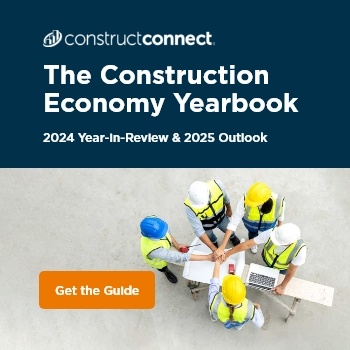

By: Michael Guckes, Chief Economist on January 9, 2025
Construction Employment Update - December 2024
November’s total construction hiring added 10,000 jobs to the construction labor force from the month prior. This latest reading was below average when compared to the past 12 months and puts 4Q2024 on track to be the weakest fourth quarter since 2019.
The average monthly increase in construction jobs YTD stands at 17,500, down from the 20,000-plus level recorded as recently as September. It is well below the 3-year average of 21,000.
The strongest gains for the month came once again from nonresidential sub-trades which added 7,000 jobs. This was followed by residential sub-trades and engineering and civil jobs with each adding 2,000 jobs.
The only segment to lose workers was nonresidential building with a loss of 2,000 jobs. Hourly wages and weekly hours worked continue to make construction an attractive industry for laborers.

Chart of weekly construction earnings compared to weekly total private earnings. Image: ConstructConnect
November’s average hourly construction wage increased to $38.74 while the average number of hours worked per week fell slightly to 38.9. In comparison, the average hourly wage of all private sector workers increased to $35.61 and weekly hours worked increased to 34.3.
The combination of these trends amounted to average weekly construction earnings of $1,507, a $286, or 23%, weekly premium when compared to the average private-sector laborer’s weekly compensation.
Read the Construction Economy Snapshot for more details on construction labor, trend graphs, and regional analysis.
About Michael Guckes, Chief Economist
Michael Guckes is regularly featured as an economics thought leader in national media, including USA Today, Construction Dive, and Marketplace from APM. He started in construction economics as a leading economist for the Ohio Department of Transportation. He then transitioned to manufacturing economics, where he served five years as the chief economist for Gardner Business Media. He covered all forms of manufacturing, from traditional metalworking to advanced composites fabrication. In 2022, Michael joined ConstructConnect's economics team, shifting his focus to the commercial construction market. He received his bachelor’s degree in economics and political science from Kenyon College and his MBA from the Ohio State University.


 Sign In
Sign In

